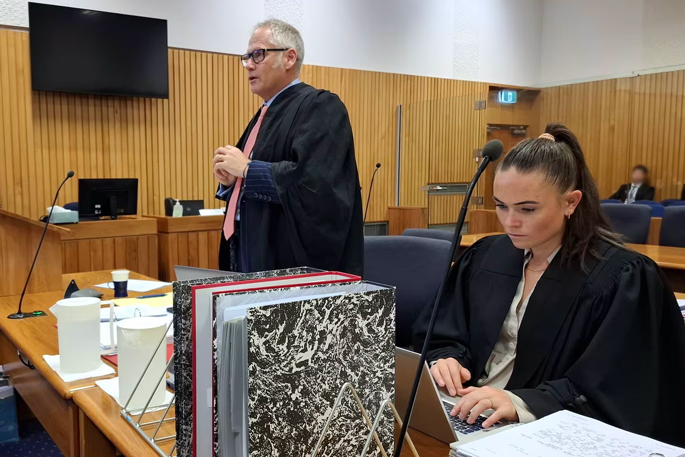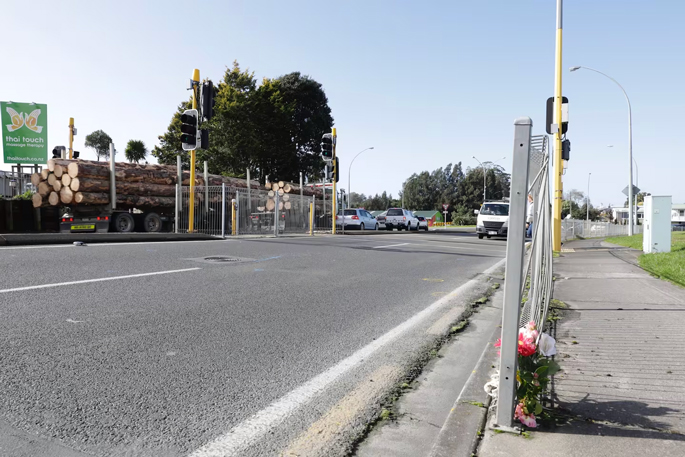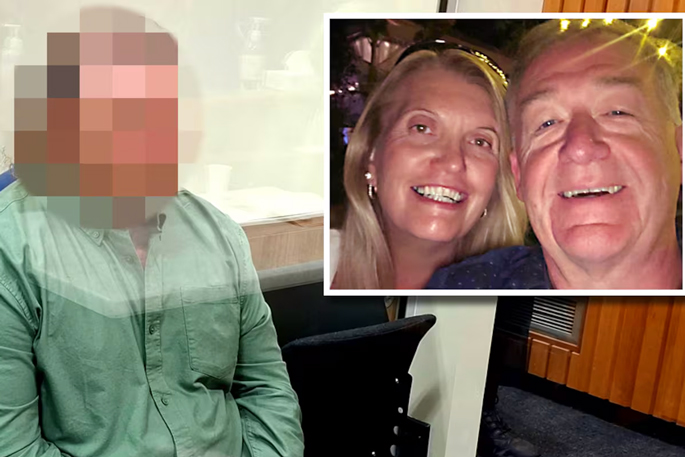“The questions kept coming over and over ... why?”
The 60-year-old motorcycle rider who struck Geoffrey and Karen Boucher in 2022, as they crossed State Highway 2 in Bethlehem, says he kept returning to the scene to understand “why” he didn’t see the pair.
The defence case is under way in the High Court trial at Rotorua, where the man faces charges of manslaughter.
The Crown alleges the man did see the red traffic lights that were controlling the pedestrian crossing, but was travelling too fast to stop.
The man denies seeing the red light or the pedestrians, and said he didn’t realise he’d hit people until after his motorcycle was lifted off Geoffrey Boucher.
Defence lawyer Ron Mansfield, KC, told the jury it is accepted the man was speeding and was at fault, but the question remains whether the crossing was as safe as it could have been, or could have been more visible.
The defence brought to light, during cross-examination of the police crash investigator, that on the night in question, an overhanging traffic light board in the centre had been missing.
The rider said the only traffic light he recalled seeing was a green light in the centre of the road.
Under cross-examination he said he saw it before he entered the Bethlehem roundabout, and believes it was a light for the second set of traffic lights further down the stretch of road, which led him to believe he had a clear run until that point.
He gave evidence that after the incident he went back to the pedestrian crossing – taking measurements, photos and videos – to understand why he hadn’t seen the first set of lights.
The defence played a video taken during one of his visits. It showed him using the pedestrian crossing, at night, and timing the light phases.
As he got to the middle pedestrian refuge, he stopped instead of continuing as the light directed.
Just after he stopped, a car was shown to zoom across the pedestrian crossing, running a red light, just as he had done on the night in question. He caught the red-light runner on camera.
The defence said this showed the tendency of drivers to fail to see the red lights.
However, prosecutor Ian Murray had a different take when he cross-examined the rider on his video.
 Prosecutors Ian Murray and Camille Houia are leading the Crown case in a manslaughter trial in the High Court at Rotorua.
Prosecutors Ian Murray and Camille Houia are leading the Crown case in a manslaughter trial in the High Court at Rotorua.
“It’s really lucky you didn’t walk out there because that car is coming?” Murray said.
“Yeah, well that’s what I mean ... the Bouchers just jumped into my head and I thought, ‘Oh wait a minute, this is where I hit them, and I just stopped dead still ... I don’t why’,” the rider said.
“It’s almost like you knew the car was coming,” Murray retorted.
“No,” said the man.
“This car goes flashing through and that really helps your case, doesn’t it? Because this is such a dangerous crossing ... ”
The man said that at the time of video he hadn’t been charged and was “not trying to prove anything”.
He said he was focused on, “How can I help the Bouchers? Because two innocent people are dead ... Why, that was my question, why.”
Murray said the rider was trying to set up an “innocent explanation” for his speeding into the two pedestrians, because he “knew what was coming” – referring to criminal charges – and had staged the video.
The man denied that.
‘A tragedy waiting to happen’
The Crown also suggested the man’s petition, which he tabled at a Tauranga City Council meeting, was a further attempt to cover his actions.
The petition asked the council to do a safety review of the pedestrian crossing.
During the man’s evidence, he said he’d never been to a council meeting before, and wasn’t really a “people person”, but he hadn’t wanted the Bouchers’ loss of life “to be a waste”.
He’d received around 700 signatures on the petition he’d named “A tragedy waiting to happen”, after he saw a news article following the incident with that headline, in which residents voiced their concerns about the crossing.
 The Bethlehem pedestrian crossing where Geoffrey and Karen Boucher were killed. Photo / Mead Norton
The Bethlehem pedestrian crossing where Geoffrey and Karen Boucher were killed. Photo / Mead Norton
Murray suggested the petition “wasn’t about community spirit, it was trying to help your case”.
The man denied this; he said he wanted answers and didn’t want an incident like this to happen again.
“I wanted to know why I didn’t see them, and that red-light runner told me exactly what I needed to see ... there’s obviously a problem with that intersection,” the man said.
A Tauranga City Council report said that over five years, just over 47 million motorist trips had been made on that section of road, with 18 reported incidents between the two Bethlehem roundabouts during that period.
The only incident of pedestrians being hit was the Bouchers’ deaths in July 2022.
The rider said, under cross-examination, he wished he could understand why he hadn’t seen the Bouchers or the red light, but all he could see was a green light in the distance.
He accepts he must have seen something at the last minute, as his brake lights were seen on CCTV footage coming on within a second of the collision, but he has no memory of seeing anything, nor applying the brakes.
Murray put to him that he did remember seeing the red lights, but because he was travelling around 70km/h, in a 50km/h speed zone, he couldn’t stop in time.
“I must have seen something but I don’t know what ... I can’t explain it. I don’t remember seeing the Bouchers,” he said.
He said even at the speed he’d been travelling, he would have been able to stop if he’d seen the lights, or the couple on the pedestrian crossing.
The trial continues.





0 comments
Leave a Comment
You must be logged in to make a comment.